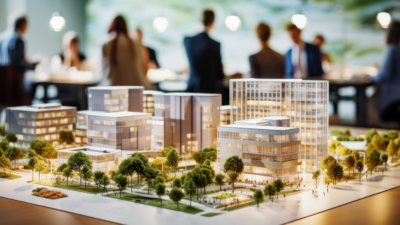The landscape of behavioral health care is evolving rapidly, with an increasing demand for parity between mental and physical health services. Statistics from Axios reveal that 9 in 10 Americans advocate for health insurers to cover mental healthcare on par with physical healthcare.
The intersection of behavioral health and real estate presents unique opportunities to create healing spaces that promote holistic well-being.
The Role of Environment in Healing
Environment plays a crucial role in shaping mental well-being. Sustainable and therapeutic design trends are gaining prominence in behavioral health facilities. Human-centered design (HCD) approaches, endorsed by institutions like the National Institutes of Health (NIH), are being leveraged to enhance patient experience in healthcare settings. These design principles emphasize creating spaces that promote comfort, security, and positivity.
In designing behavioral health facilities, considerations extend beyond aesthetics to encompass sensory, engagement, social-relational, and affective aspects. Elements such as colors, sounds, textures, and levels of activity are meticulously curated to foster a conducive healing environment. According to NIH, patients benefit from spaces that evoke feelings of safety, calmness, control, and creativity.
Real Estate Considerations
The integration of real estate with behavioral health initiatives requires careful attention to various factors. Accessibility and location considerations are paramount, ensuring that facilities are easily reachable for those in need. Zoning regulations and legal hurdles must be navigated to establish compliant and sustainable facilities.
The choice between adaptive reuse of existing structures and purpose-built facilities presents a significant dilemma. While purpose-built facilities offer tailored designs, adaptive reuse projects often provide cost-effective alternatives. However, as noted by Colliers, the increased costs associated with purpose-built facilities may not always translate into proportionate utility gains.
Moreover, technology integration is revolutionizing behavioral health care, enabling remote care and monitoring solutions. This integration facilitates access to services and enhances patient outcomes by bridging geographical barriers and providing continuous support.
Future Outlook
Looking ahead, behavioral health is poised to have a growing impact on the medical outpatient building (MOB) sector, and stakeholders are increasingly intrigued by the potential opportunities in this space.
Shawn Janus, quoted in Commercial Search, emphasizes the rising interest in understanding the financial viability of behavioral health real estate: “Behavioral health will have a growing impact on the MOB sector going forward. Providers, investors, developers, and lenders alike are intrigued with the potential opportunities in this space and are increasingly more interested in understanding this sub-sector and its financial viability.”
Policy changes and healthcare reforms are anticipated to shape the future landscape of behavioral healthcare. With a greater focus on mental health parity and improved access to services, opportunities for growth and investment in the sector are expected to proliferate. This presents a promising outlook for stakeholders committed to advancing holistic healthcare solutions.

 Stephen Woelfel
Stephen Woelfel

 Shawn Janus
Shawn Janus
